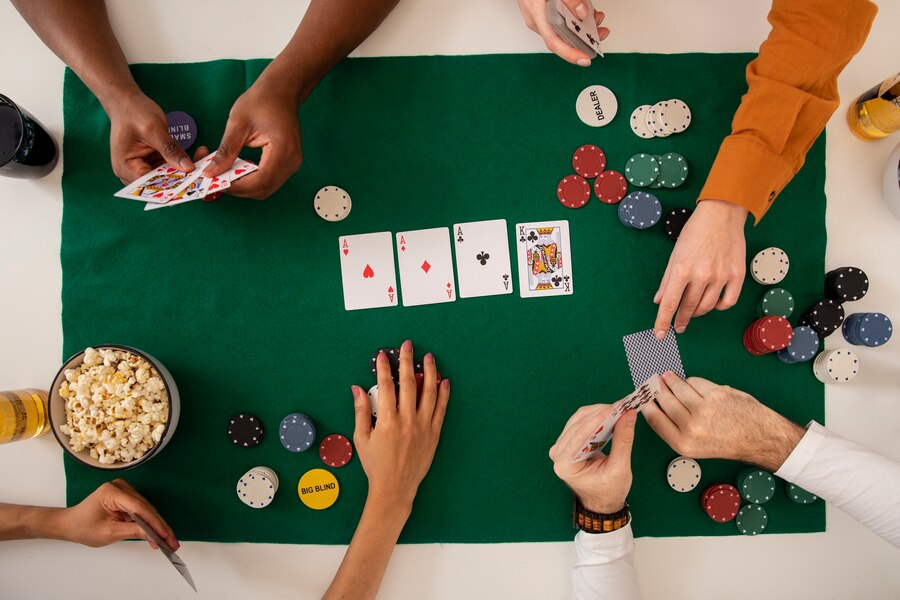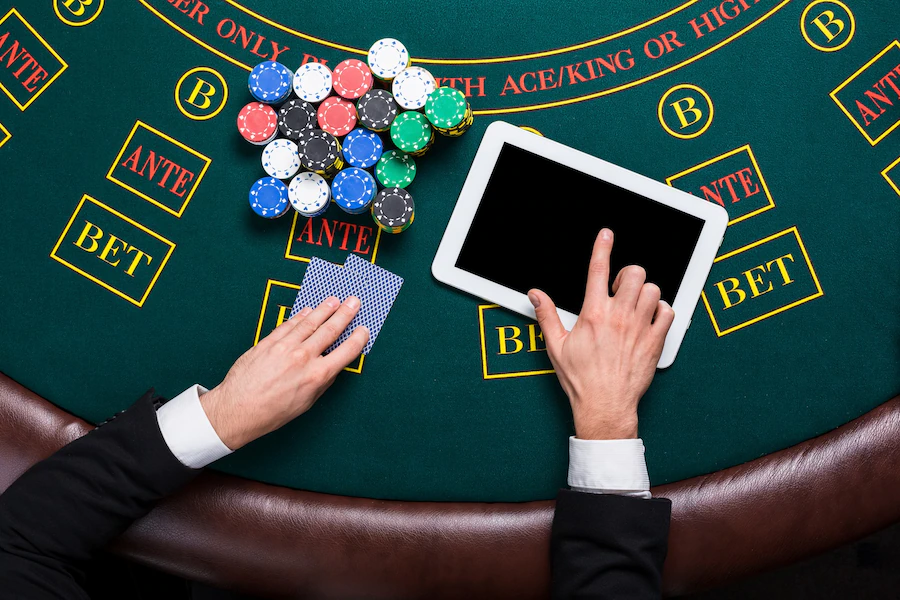Poker is a game that weaves skill and chance and showcases a deep, strategic complexity. This tapestry of tactics demands deep understanding in several key areas to thrive at an online table or in the bustling ambiance of a casino. Players must master a blend of strategic foresight, deception, hand range evaluation, and the application of game theory principles.
This article is a gateway to such enhanced poker abilities.
The Foundations Of Poker Strategy

A robust strategy is anchored in judiciously folding, calling, or raising. This decision-making process deeply involves assessing hand strength, discerning player tendencies, and maintaining situational awareness. Success in poker is achieved by seamlessly integrating these facets into a cohesive strategy.
Key to this integration is the adaptation to various playing styles. Identifying if opponents lean towards aggression or passivity or prefer a loose/tight approach paves the way for customized strategies. This flexibility in adapting to the table dynamics is instrumental in countering diverse tactics, thus boosting the likelihood of success.
Positional Play And Aggression
Position profoundly impacts poker decision-making. Occupying a late position, akin to the dealer, provides substantial informational advantages, enabling more informed and strategic choices. Conversely, early positions necessitate a cautious approach, as information is scarce.
In this context, harnessing effective aggression becomes a pivotal tool. It serves not only to intimidate opponents but also to assert control over the pot size. Using aggression at the right time, especially through timely raises, often forces opponents into tough choices, benefiting the aggressor.
Calculating Odds And Outs
Calculating odds and outs is crucial for evaluating hand potential, as it directly informs decisions on whether to proceed with a hand. Therefore, understanding these probabilities aids in immediate decision-making, long-term success, and strategic risk assessment.
Bluffing: More Than Just A Poker Face

Bluffing is deeply rooted in understanding how opponents perceive one’s actions. Doing it effectively depends on the skillful projection of confidence or doubt, thus influencing rivals’ interpretation of one’s hand strength.
To master it, players must focus on strategic timing and acute situational awareness. It’s all about identifying the perfect moment to bluff, especially when competitors are vulnerable or prone to folding.
Types Of Bluffs
Various techniques serve different purposes at the poker table.
- Stone-Cold Bluff: Betting or raising with a hand with little or no chance of improving, typically used when you believe you can force your opponents to fold.
- Semi-Bluff: Involves a hand that isn’t strong at the moment but has the potential to improve, such as a draw to a straight or a flush.
- Continuation Bluff: This occurs when a player who raised before the flop shows strength by betting on the flop, regardless of whether their hand has improved.
- Probe Bluff: Used after an opponent who was aggressive before the flop suddenly shows weakness by checking on the flop or turn. This bluff aims to ‘probe’ the strength of the opponent’s hand.
- Defensive Bluff: A ‘blocking bet’ is a smaller bet to prevent an opponent from making a larger bet if checked to.
- Check-Raise Bluff: In this bluff, a player checks intending to raise if an opponent bets. This often represents a more substantial hand, forcing opponents to fold.
Choosing the correct technique depends on the game dynamics and opponents’ tendencies.
Recognizing and countering bluffs holds equal importance in poker strategy. This process demands acute observation skills and a deep understanding of opponents’ betting patterns. Often, spotting a bluff involves noting inconsistencies in an opponent’s style or bets and letting savvy players craft fitting responses.
Bluffing And Body Language
Reading and utilizing body language in poker also provides a strategic edge. It involves interpreting subtle cues like facial expressions, gestures, and even vocal tones. This non-verbal communication can reveal much about an opponent’s confidence in their hand.
Simultaneously, skilled players use their body language to mislead opponents. Controlling physical cues, from facial expressions to hand movements, can create an illusion of strength or weakness. This bluffing aspect requires practice and self-awareness, as effective deception often lies in the details opponents try to decipher.
Hand Ranges: Predicting Opponent Moves
Understanding hand ranges provides insights into the potential cards an opponent might play. This concept is not just about specific cards but encompasses a spectrum of likely plays in various situations. Such knowledge significantly enhances strategic decision-making, enabling accurate anticipation of opponents’ moves.
It begins with monitoring opponents’ behaviours across different scenarios. Key questions include whether a player often raises pre-flop or tends to fold to a re-raise. These behavioral patterns assist in deducing their likely range of cards.
For example, a tight player’s pre-flop raise suggests a strong set of cards, whereas a similar move by a loose player may not indicate a powerful hand.
Further refining hand ranges requires considering the context of the game. Factors like the tournament stage, the size of the blinds, and the players’ stack sizes all influence hand range decisions. Advanced players also factor in their table image and past interactions with contenders to adjust these ranges.
Players must consistently revise their assessments of opponents’ card ranges as the game unfolds, integrating new insights from each hand. This evaluation shifts from attempting to pinpoint exact cards to comprehending the broader spectrum of possible plays and their likelihoods. To further assist in this analysis, refer to this poker range chart.
Game Theory In Poker

Poker theory revolves around understanding optimal plays, predicting opponents’ moves, and assessing various possible outcomes. It’s deeply rooted in the practical aspects of each hand, guiding players through complex scenarios. It’s a framework that applies both to the casual home game and the intense atmosphere of high-stakes gambling in casinos.
Incorporating it into actual games involves more than theoretical knowledge. Players must skillfully evaluate real-time decisions, considering bet sizes, stack depths, and opponents’ playing styles. Besides, it’s also used to assess their positions, deciding when to be aggressive, when to bluff, and when to fold.
Applying these concepts practically aids participants in navigating uncertain situations, often involving incomplete information about opponents’ hands. Game theory provides a structured approach to these decisions, focusing on maximizing gains or minimizing losses over the long run.
Additional Reading:







